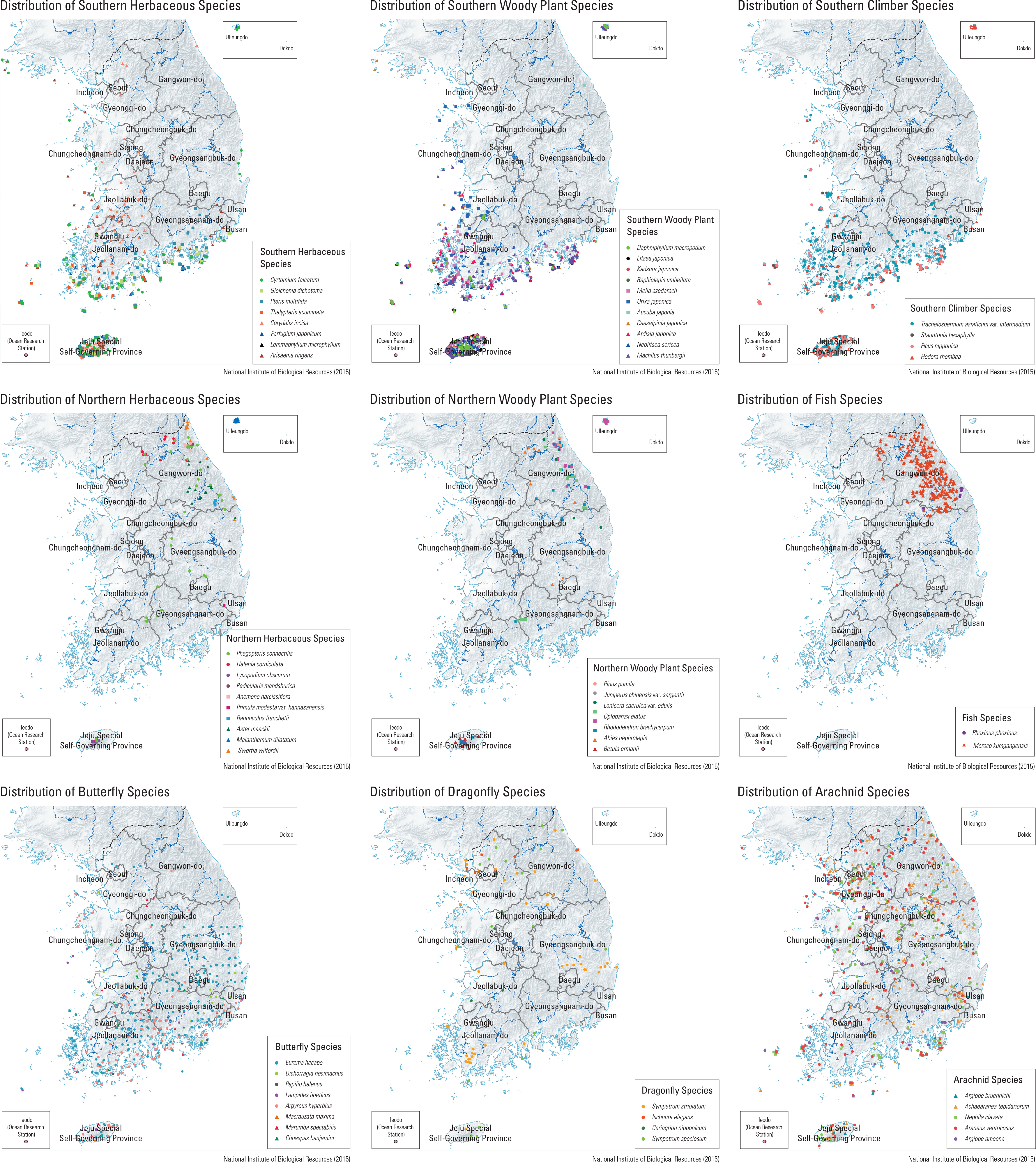English II
In Korea, it is predicted that rise in temperature and increase in precipitation will continue, and that the frequency and intensity of extreme weath- er events will also be reinforced. Climate-sen- sitive Biological Indicator Species (CBIS) are species that need to be consistently monitored as indicators because they show clear changes in activity, distribution, or population size when af- fected by climate change. In 2010, the National Institute of Biological Resources (NIBR) announced a total of 100 Climate-sensitive Biological Indicator Species (CBIS) to effectively monitor and prepare the estimation approaches for the impacts of climate change on the distribution of biodiversity and vulnerability of ecosystems. The selected species include 18 vertebrate species, 28 invertebrate species, 44 plant species, and 10 algae and fungi species. Moreover, a spider species, one of the poikilotherms, showing sensitivity to the changes in the ambient temperature, was added to the list in 2015. NIBR has expanded its research activities on the climate change biological index in various ways, such as monitoring the changes in the bi- ological and ecological characteristics caused by climate change. To effectively predict such trends in changes, NIBR has been operating the Korea Biodiversity Observation Network (K-BON) since 2011. By 2015, 30 organizations were ac- tively engaged in the KBOB. NIBR is collaborat- ing with international biodiversity programs such as the Asia Paci c Biodiversity Observation Net- work (AP-BON) and the Group on Earth Obser- vations Biodiversity Observation Network (GEO BON).
page_2 |

